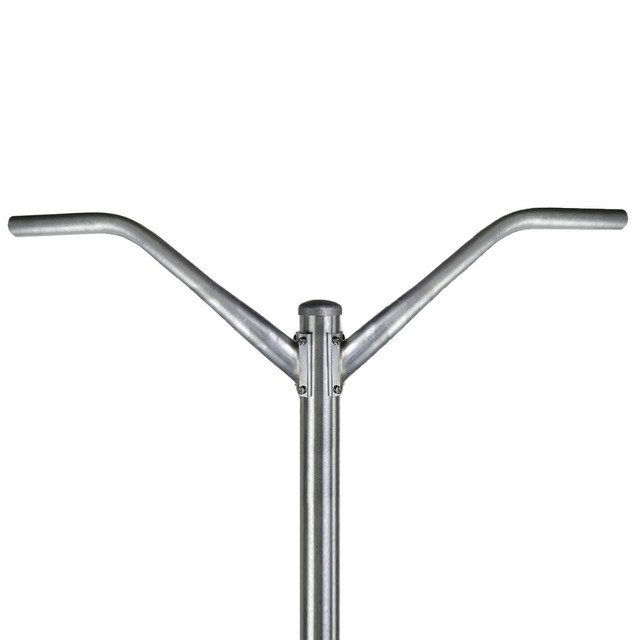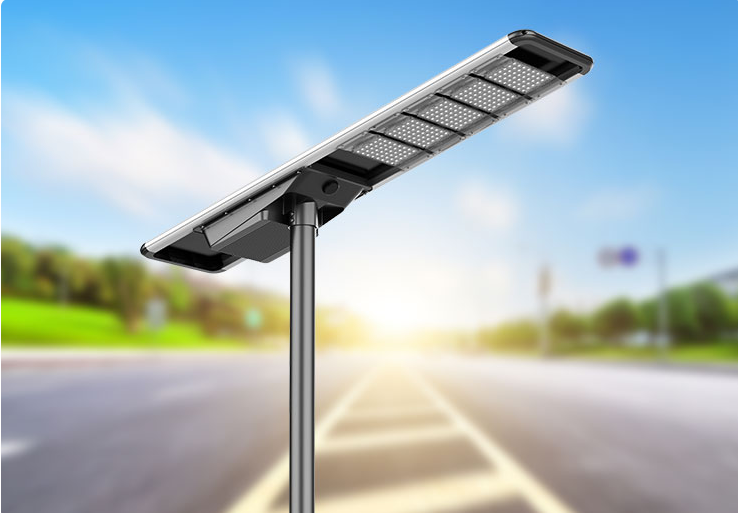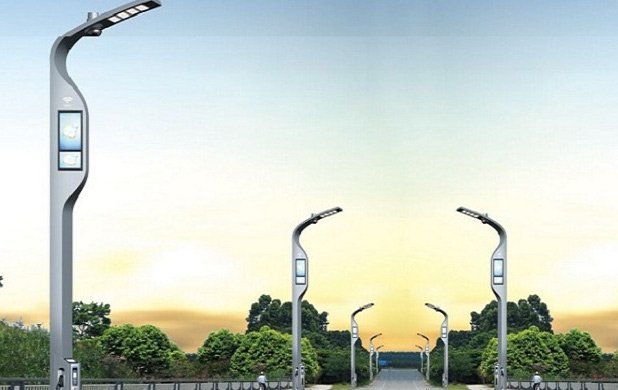Surface protection isn't just a pretty layer—it's the first shield against weather, corrosion, and time.
Galvanized and painted poles have huge differences in durability and maintenance. Knowing these differences helps avoid costly failures and ensures your project stands strong for decades.
When I work on projects across Africa and Asia, I see so many poles replaced too soon just because the coating choice was wrong. Let’s break this down clearly.
Corrosion protection: Zinc vs. paint?
Steel hates water and air—it rusts fast. So, stopping corrosion is the most important job of a pole coating.
Galvanized poles are dipped in molten zinc. This zinc layer bonds with steel and protects it even if scratched. Paint, on the other hand, is only a surface film and chips off easily.
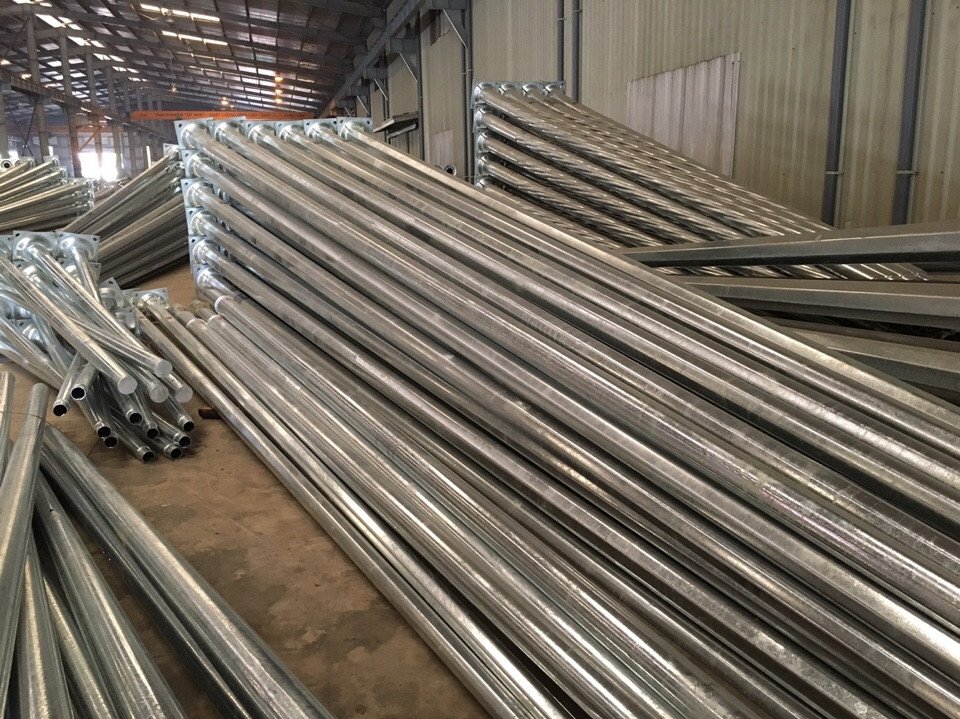
Why zinc works so well
When I inspect old installations, I see how zinc does three things:
- Creates a physical barrier
- Works as a sacrificial layer (zinc corrodes first)
- Self-heals small scratches
Paint can’t do this. Once it cracks, rust spreads fast.
Real project cases
In coastal towns of Ghana, galvanized poles still perform after 20 years. Painted poles there needed repainting in just 5 years.
| Environment | Galvanized Pole | Painted Pole |
|---|---|---|
| Coastal Area | 20–30 years | 5–7 years |
| Urban Pollution | 25–35 years | 7–10 years |
| Dry Rural | 40–50 years | 10–15 years |
When you're near the ocean or in high-rainfall areas, zinc is really the only smart choice.
Lifespan & real durability?
When I design or supply poles, I always think about how long it will last before someone has to send a repair crew.
Galvanized poles easily last 20–50 years with minimal touch-ups. Painted poles start breaking down after only 5–7 years.
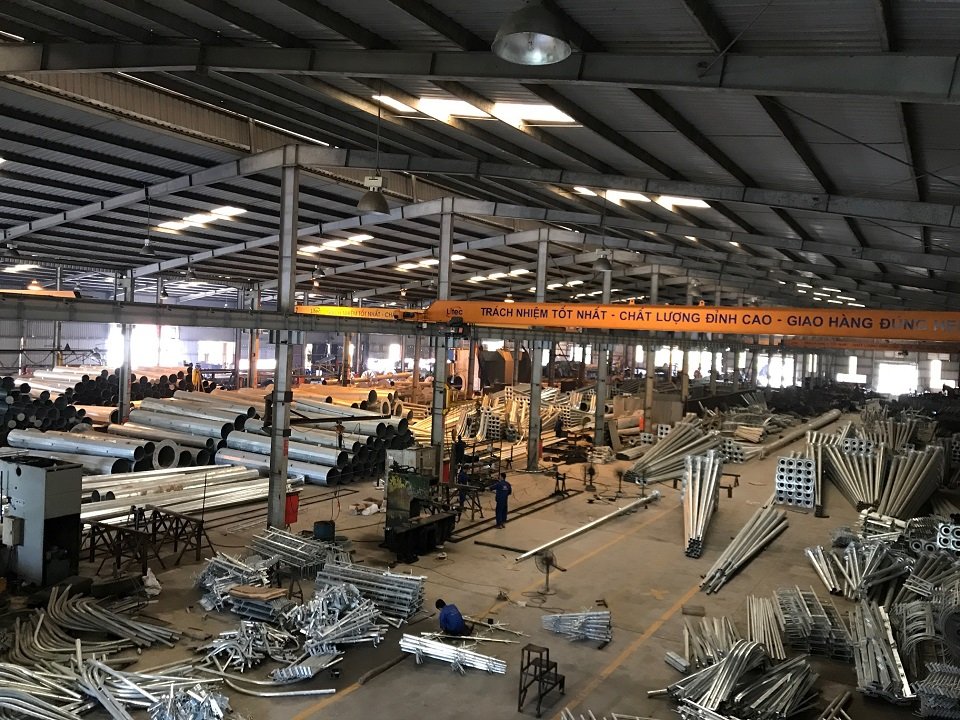
Why painted poles fail sooner
- UV light fades and weakens paint
- Water gets under small cracks and starts rusting
- Scratches from vehicles or maintenance work speed up damage
Galvanized poles survive because zinc protects the entire pole—even hidden welds and edges.
Story from the field
In Togo, a highway lighting project used galvanized poles. After 25 years, I visited the site—almost no rust, no repainting. At a different local project with painted poles, they were replacing sections every few years.
| Location | Galvanized Lifespan | Painted Lifespan |
|---|---|---|
| Highway Median | 30–40 years | 7–10 years |
| Coastal Road | 20–30 years | 5–7 years |
For hard-to-reach installations, galvanized poles save a lot of headaches and money.
Maintenance & long-term cost?
Choosing the cheaper option at the start often means higher costs later.
Galvanized poles need almost no maintenance, while painted poles need regular repainting, labor, and downtime.
Real cost over 20 years
| Item | Galvanized Pole | Painted Pole |
|---|---|---|
| Upfront Cost | Medium | Low |
| Repainting Needed | No | Every 5 years |
| Labor Costs | Almost zero | $50–$200 each repaint |
| Traffic Disruption | None | Significant |
| Total 20-Year Cost | Lowest | Highest |
Every time a pole is repainted, you also need to close lanes, rent lifts, and pay workers. Plus, drivers complain about delays.
I’ve watched clients choose painted poles to "save money," but after ten years, their maintenance costs already doubled the initial savings.
Appearance & design flexibility?
Some projects need good looks first—parks, city centers, or branding projects.
Painted poles offer endless color choices and custom finishes. Galvanized poles usually have a silver-gray industrial look.
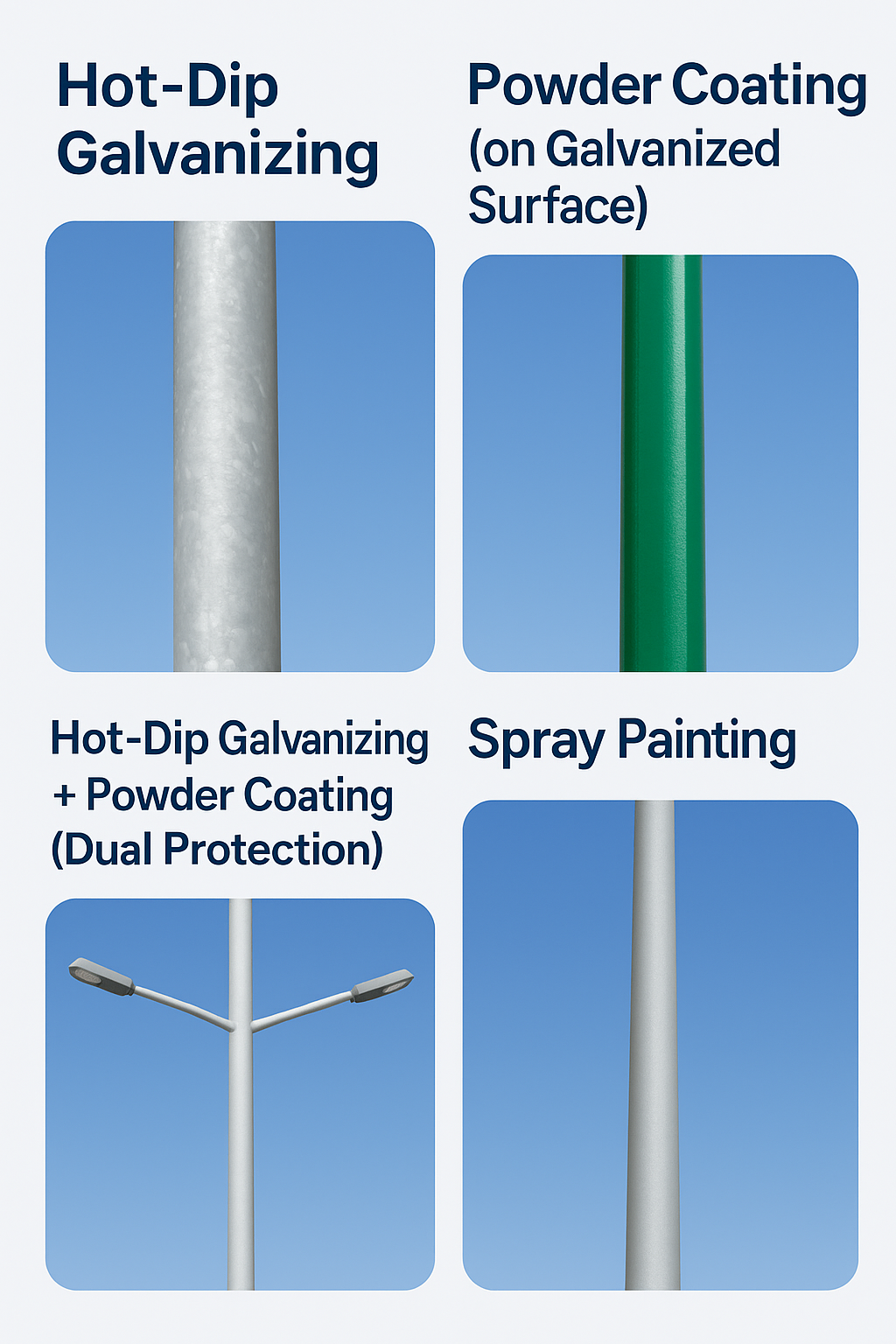
Aesthetics: pros and cons
| Feature | Galvanized | Painted |
|---|---|---|
| Color Options | Limited | Unlimited |
| Finish Style | Matte silver | Glossy or matte |
| UV Fade Resistance | Good | Varies by paint |
| Maintenance | Minimal | Regular touch-ups |
Hybrid solution: galvanized + powder coating
In some urban projects, I recommend a combo—first galvanize, then apply a powder coat.
- Keeps corrosion protection
- Adds any color you want
- Stronger than regular paint
It's more expensive, but perfect for city squares or heritage sites.
Tender and compliance?
Tender documents can decide everything. Many infrastructure tenders require galvanization to meet safety and lifespan standards.
Most government and road tenders specify hot-dip galvanization per ISO 1461 or similar standards. Painted poles are usually allowed only in parks or private campuses.
Standards snapshot
| Standard / Spec | Requirement |
|---|---|
| ISO 1461 | Hot-dip galvanizing |
| ASTM A123/A153 | Zinc coating on structures |
| EN 40-5 | Lighting poles in Europe |
I’ve seen contractors lose bids simply because they offered painted poles when galvanization was clearly required. Always check local specs first before making a promise to your client.
So which one is better for you?
| Project Type | Best Choice |
|---|---|
| Highway / Major Road | Galvanized |
| Coastal / Wet Zones | Galvanized |
| Short-Term or Indoor | Painted |
| Urban Design Park | Painted or Hybrid |
Painted poles win on looks, but galvanized poles win on strength, maintenance, and cost over time.
My final advice
I always tell my partners: "If you want to impress visitors, choose paint. But if you want to impress your accountant and future maintenance team, choose zinc."
Sometimes I feel a bit old-school pushing galvanized poles so hard, but every time I pass by an old, solid zinc-coated pole, I feel proud.
Conclusion
Choosing the right pole coating isn’t just about today’s budget—it's about safety, reputation, and future headaches. If in doubt, galvanization is almost always the safer, smarter move.


